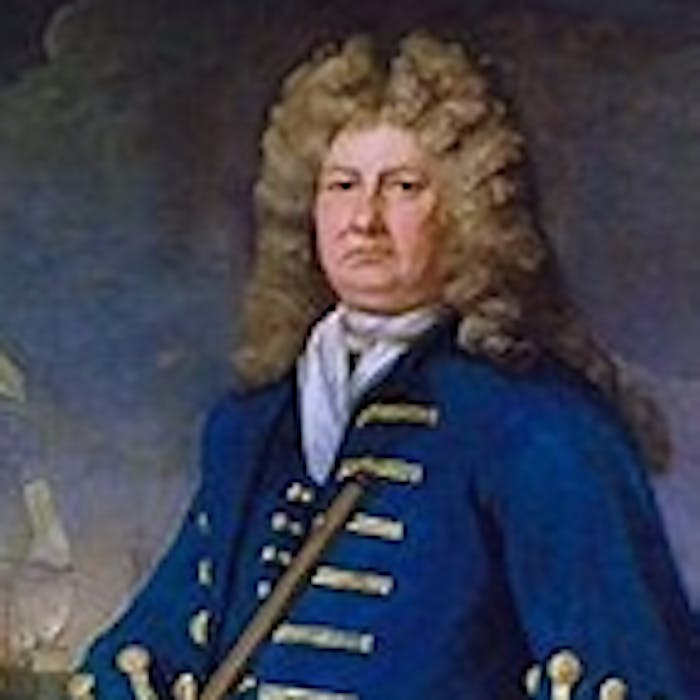
Sir Cloudesley Shovell
Cloudesley Shovell was an English Naval Officer who had a distinguished career and ended up as Admiral of the Fleet. He is remembered for his death as much as for his life.
Cloudesley Shovell was born in Cockthorpe in 1650 into a well-to-do family. His unusual first name comes from his paternal grandmother, Lucy Cloudisley. As a young man he joined the Navy and fought at the battle of Solebay and then at the battle of Texel during the Anglo Dutch Wars. He was promoted to Rear Admiral in June 1690 and in 1691 he married the widow of his former commander Rear Admiral Sir John Narborough. Through her he gained two young stepsons, who also went into the navy.
The Admiral had a political career as a Member of Parliament for Rochester from 1695 to 1701 and from 1705 until his death in 1707. However, his naval career continued and, on 6th May 1702 he was promoted to full Admiral.
Five years later, the Amiral was escorting a flotilla of 21 ships, comprising 15 ships of the line, four fireships, one sloop and one yacht, when disaster struck. The fleet was reurning from action off Gibraltar when the fine weather suddenly turned stormy, visibility dropped and the very real danger of getting lost loomed.
Sir Cloudesley called a meeting with his senior officers, plus two other admirals, Sir John Norris and Sir George Byng.
To determine the depth of the sea around them depth soundings were taken, and also samples of the sea bed. These showed they were not far from land but which land? Without the advantage of modern instruments their best guess was that this was the island of Ushant at the entrance to the English Channel.
The only dissenting voice was that of Captain Sir William Jumper, an experienced naval officer, who thought they were near the Isles of Scilly. He was convinced that in less than three hours they would see the St. Agnes lighthouse.
He was outvoted and the decision was taken to sail north east into the open channel. Several of the leading ships made it safely but, with the poor communications of the time, they were unable to inform the Admirals that they had indeed passed the lights of St. Agnes on the Scilly Isles!
In a fatal error of judgement, Sir Cloudesley Shovell decided that these lights were shining from France and ordered the everone to sail to the West of the light.
This decision led the entire Fleet to founder on the rocks of the Scillies, causing one of the worst ever maritime disasters.
The Admiral's flagship, Association, was the first to strike the rocks and it sank almost immediately, swiftly followed by two other ships. Out of over 1800 sailors on the three ships only one man, a Quartermaster, survived and on the flagship itself not one of the 800 men on board lived to tell the tale. Even the Admiral's two step sons, John and James, aged only 22 and 23 and the ship's dog were shipwrecked and were washed up on the shore, dead. They were buried where they were found.
Due, no doubt, to the severity of the storm, positively identifying those poor battered souls washed up on land the following morning, was very difficult but there is some evidence to suggest that Admiral Shovell may, in fact, have initially survived the cruel seas. Many myths have sprung up about this. One is that he was washed up on the beach alive but was then stabbed to death by a local woman for his valuable emerald ring which she stole from his severed finger.
However, due to his fame, a local embalmer was called in to preserve the body and he did not report a missing finger. Nor a missing ring. The Admiral was briefly buried at Port Hellick Cove but was later exhumed and taken to London where he was finally laid to rest in Westminster Abbey.
Further Reading
Links to external websites are not maintained by Bite Sized Britain. They are provided to give users access to additional information. Bite Sized Britain is not responsible for the content of these external websites.
